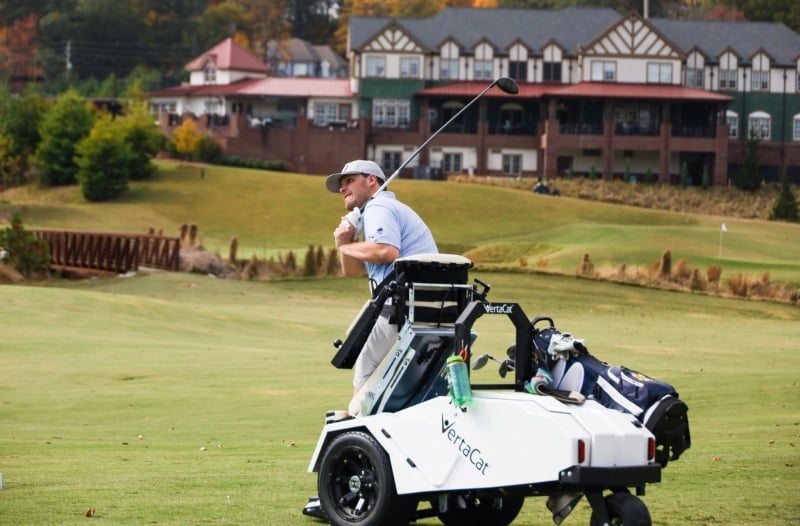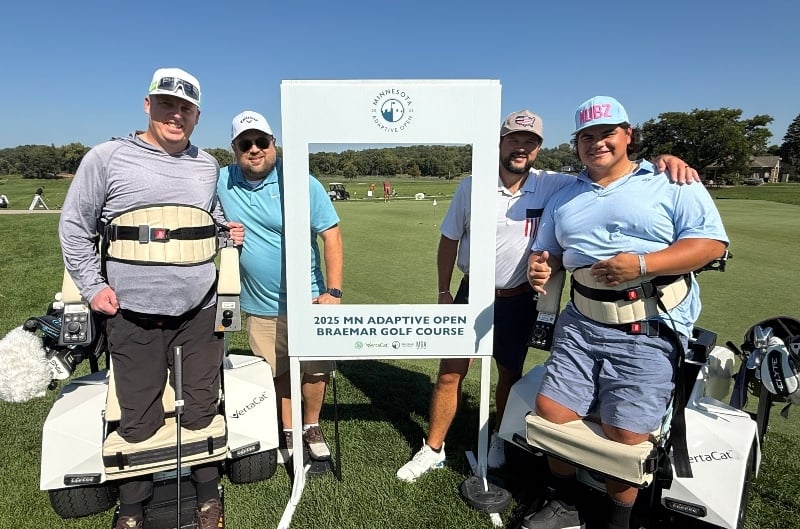Back in the Game: Skylar Miller's VertaCat Story
Skylar Miller golfed his entire life. Then, a spinal cord tumor changed everything.
2 min read
VertaCat Nov 21, 2025 12:30:00 PM
.jpg)
At The Loop Golf Course in Chaska, Minnesota, adaptive access was baked into the blueprint. Today, three VertaCats serve golfers who travel from across Minnesota and beyond. Many drive an hour or more just to experience what they thought was impossible: playing a full round of golf standing up.
Tim Anderson, John Kellin, and John Young have been involved since the beginning. Kellin, Head Golf Professional at the neighboring Chaska Town Course, says, "All that cool stuff really revolves around the VertaCat because without that, you don't have the things happening."
The conversation about adaptive golf started before The Loop even existed. Partnering with Barrier Free Golf, led by Anderson, the Par 30 course established accessible inclusivity as a main pillar.
"Part of that was including the population that plays out of a wheelchair and other differently-abled golfers," explains John Young, The Loop’s PGA professional.
During course development, the team at The Loop looked at the available options for serving seated golfers. By the time construction began, the VertaCat stood out.
"Everything about VertaCat was better. The versatility, just a lot of thought had gone into it," Kellin notes.
The course secured funding through grants (the PGA REACH Foundation and a Minnesota license plate grant) and a Barrier Free Golf donor. They started with two VertaCats. Courage Kenny Rehabilitation Institute purchased a third VertaCat after seeing the impact of its weekly program.
The VertaCat team provided comprehensive training on operation and adjustments. The staff work with golfers of varying sizes and ages, and the process is straightforward.
When golfers book tee times, the system notes VertaCat availability, and an employee is available to help with setup. However, many repeat users know their settings and handle the setup themselves.
Kellin notes The Loop’s terrain is not a "flat pancake course”—it has "a lot happening with terrain and slopes." The VertaCat handles every piece of it, allowing players to navigate the natural challenges.
The VertaCat's users span a wide range of ages and abilities. It is truly "game-changing" for:
Golfers now drive from places like Anoka and Elk River to use the VertaCat. Young notes, "A number of lifelong golfers who thought they were done golfing now know that they can get in."
The Loop partners with Chaska's community center, which runs a strong adaptive sports program. They've brought groups out to the course. Barrier Free Golf promotes events. The Minnesota Golf Association has used it several times for adaptive golf days, running three or four events each summer.
The course never charges for VertaCat use, and more adaptive-specific events are coming.
Kellin and Young hope The Loop continues to support Minnesota's growing adaptive golf movement.
The three VertaCats create some capacity considerations for dedicated adaptive events, but availability hasn't been an issue yet. The education process includes letting people know during booking that VertaCats are available and which one is ready.
Golfers travel from across Minnesota and neighboring states to play with a VertaCat at The Loop. They thought they were done golfing. Now they're regulars, they're improving, they're dreaming about competitive adaptive golf.
The infrastructure exists. The equipment works. The demand is there.
"Every course should have one," Kellin says.

Skylar Miller golfed his entire life. Then, a spinal cord tumor changed everything.
.jpg)
At The Loop Golf Course in Chaska, Minnesota, adaptive access was baked into the blueprint. Today, three VertaCats serve golfers who travel from...

The Minnesota Golf Association (MGA) hosted Minnesota’s first Adaptive Open in September at Braemar Golf Course in Edina. The three-day event...